Methods of gathering intelligence can be broadly divided into two categories: those where the target knows that you're watching, and those where he doesn't. Most modern methods of intelligence-gathering, such as satellites, airplanes and the internet, fall into the former category, and have the advantage that they're generally pretty effective and straightforward to implement. But they have one big downside. Because they know they're being watched, the enemy will try to control what you see. They can't do this perfectly, which leaves those as useful sources of information, but there are some things where you really want to know what the other side is doing when they don't think you're looking.
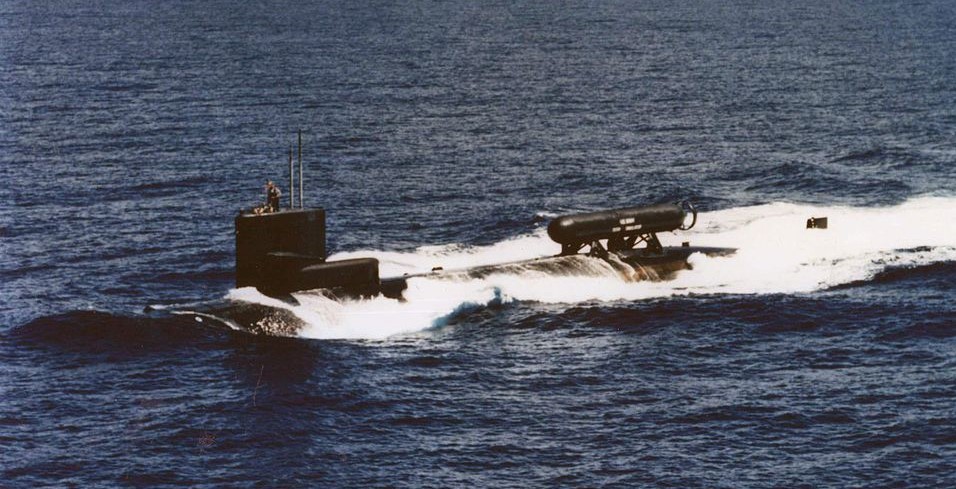
Human spies are of course the best-known example of this, but there is another, which has been almost as important over the last three-quarters of a century: the submarine. From the earliest days of the Cold War, NATO used these stealthy platforms to gather information the Soviet Union would rather it not have, doing everything from listening to communications off Russian bases to shadowing missile submarines and learning their patrol routines, plucking pieces of missile off the seabed and even tapping cables inside Soviet territorial waters.1 The ability of a mobile platform to get in close while undetected and then leave again proved vital to victory in the Cold War, and these missions, shrouded in secrecy, continue to this day.
These missions began in 1949, when USS Cochino was equipped to monitor the telemetry of Soviet missile tests and sent into the Norwegian Sea. She was successful in picking up some Soviet signals, but heavy seas caused a series of battery explosions. Nearby submarine Tusk came to the rescue, but seven men were lost during the perilous transfer of the crew before Cochino succumbed to flooding. But only days later, the Soviets tested their first atomic bomb, and the pace of the Cold War began to pick up.
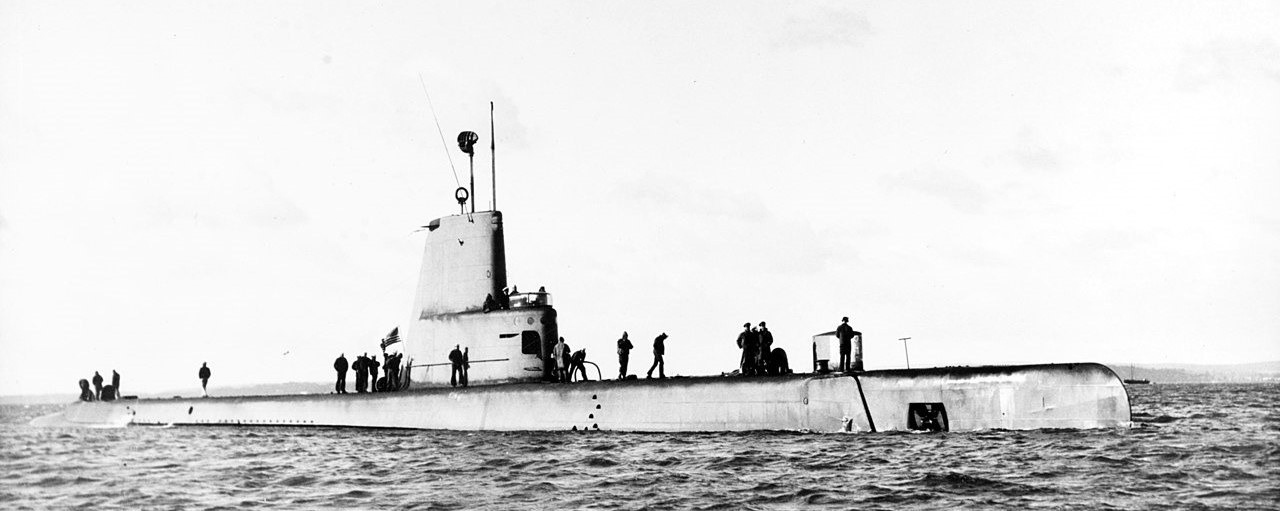
USS Cochino
With it came more submarine missions off the Soviet coast, increasing in frequency and sophistication throughout the 50s. Some missions were intended to get information on Soviet equipment, everything from capturing telemetry from missile tests to taking periscope photos, both above-water and underwater, of new ships and submarines. Others were focused on operational matters, tracking the state of the Soviet fleet and seeing how it planned to operate. This information proved invaluable to the Navy as it planned how to fight the Soviets, but even more important was the chance that a watching submarine would detect the signs that an attack was imminent. But getting this information often involving closing to within 12 miles of the Soviet coast, placing the submarine within what the Soviets claimed as their territorial waters.2 Largely screened from outside scrutiny, the captains of the surveilling submarines competed to see who could get the closest to the target, and keep their masts up the longest.
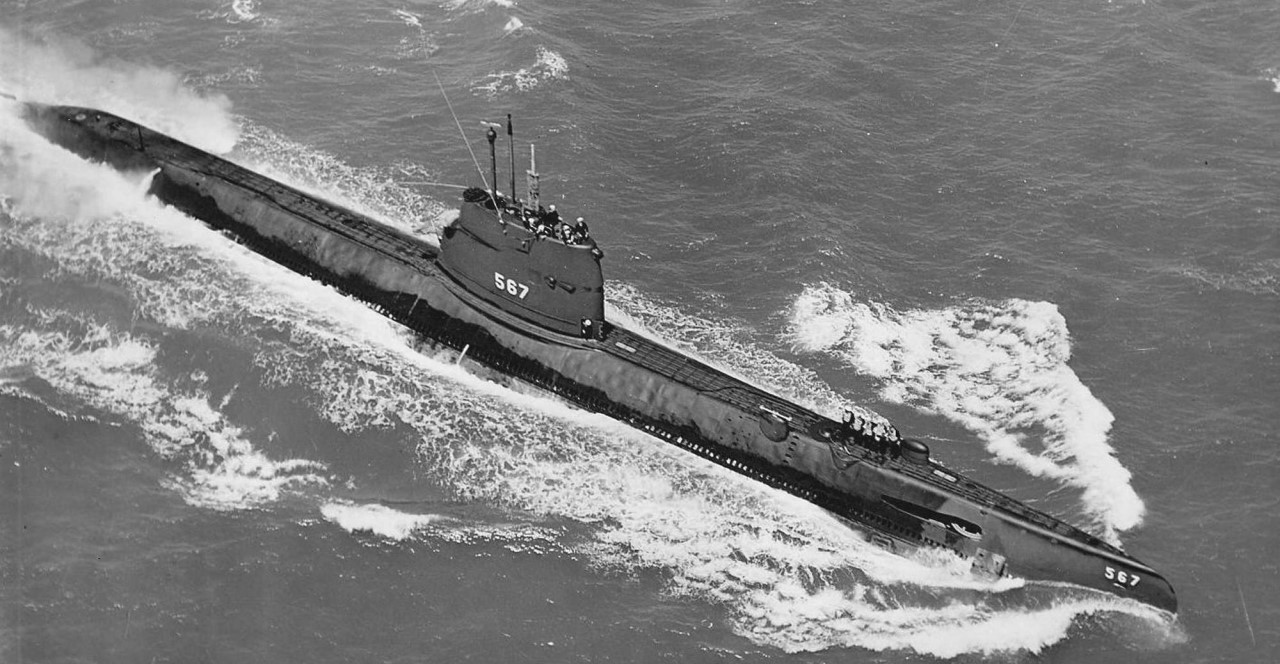
Gudgeon
Eventually, one of them would get caught, and the dice finally came up for USS Gudgeon in August 1957. Standard practice was to close with the coast during the day, then retreat offshore at night to snorkel, recharging the batteries and replenishing the air within the boat. Unfortunately, the Soviets spotted her late in the day and ships quickly converged, making it impossible for her to get away or recharge her batteries. The air quickly grew foul, and small depth charges fell around Gudgeon. Eventually, it was too much to withstand, and she was forced to the surface. The Soviets let her go, signalling "Thanks for the ASW exercise", but it was clear that the days of taking diesel boats near the Soviet coast were numbered.
Fortunately, an alternative was available, as nuclear propulsion was in the process of revolutionizing submarine warfare. Admiral Rickover had initially resisted using his new boats off the Soviet coast, but high underwater speed and independence from air were clearly a major advantage, and the nuke boats were soon taking most of the shifts off the Soviet coast. But the Soviets were spending more and more time at sea themselves, and trailing their submarines became an important part of the role of the SSNs. They could watch and listen to their adversaries, usually undetected, and learning how they would operate in wartime. This mission took on increased importance in the late 60s when the Soviets regularly began to deploy their Yankee class SSBNs into the Atlantic. These raised the possibility of a decapitating strike, with missiles hitting Washington before retaliation could be ordered, but they were also much quieter than the first generation of Soviet nuke boats. Tracking them would be a difficult task, first achieved by Commander "Whitey" Mack and USS Lapon, who trailed a Yankee for 47 days in late 1969. Information gathered ranged from the box she operated in (which in turn forced US intelligence to significantly increase the estimated range of her missiles) to the schedule she kept to the performance of her sonar, which usually picked up targets at half the range Lapon's did.
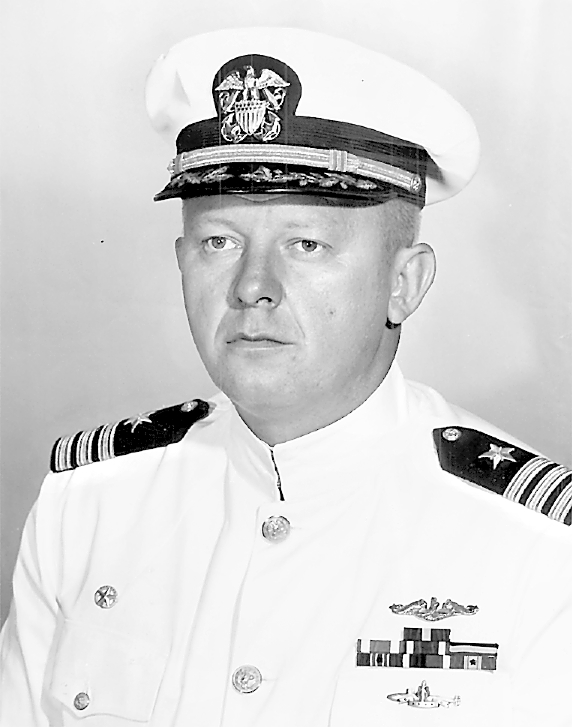
Whitey Mack
Other skippers soon began trying to match or exceed Mack's feat, and while the risks of being spotted and held down by the Soviets were diminished, a new problem appeared. Sonar is not a particularly precise sensor, and when two submarines are maneuvering in close proximity, only one of whom is aware of the other, incidents can happen. The most dramatic took place in June 1970, when a Soviet Echo class submarine attempted to submerge on top of Tautog, whose crew fled the scene of the incident falsely believing that the Soviet vessel had actually sunk. But even this wasn't enough to stop the program, although Captains were ordered to back off some (and improved ESM gear reduced the need for them to get quite as close) and the common practice of falsifying logs to hide exactly how close they'd gotten to the Soviet coast was clamped down on in the spirit of detente. But the importance of the mission was shown in the sheer number of subs dedicated to it, and the modification of the last 9 boats of the Sturgeon class with a 10' hull stretch to accommodate extra signals equipment and the men to run it.
But the 60s also saw basic eavesdropping supplemented by a new set of missions that were more involved and saw the sea not merely as a place to hide, but as a theater for more direct measures. Missile tests over the seas offered the opportunity for more than just visual and electronic observation of the tests in flight. A submarine might be equipped to search the deep sea for the remnants of the test articles, photographing them up close and maybe even retrieving them for analysis back home. The same principle could be applied to hardware inadvertently lost at sea, and even to Soviet undersea systems. A specially-modified submarine was an ideal platform, allowing the mission to be carried out covertly and avoiding the problems that came with operating from the often turbulent ocean surface.
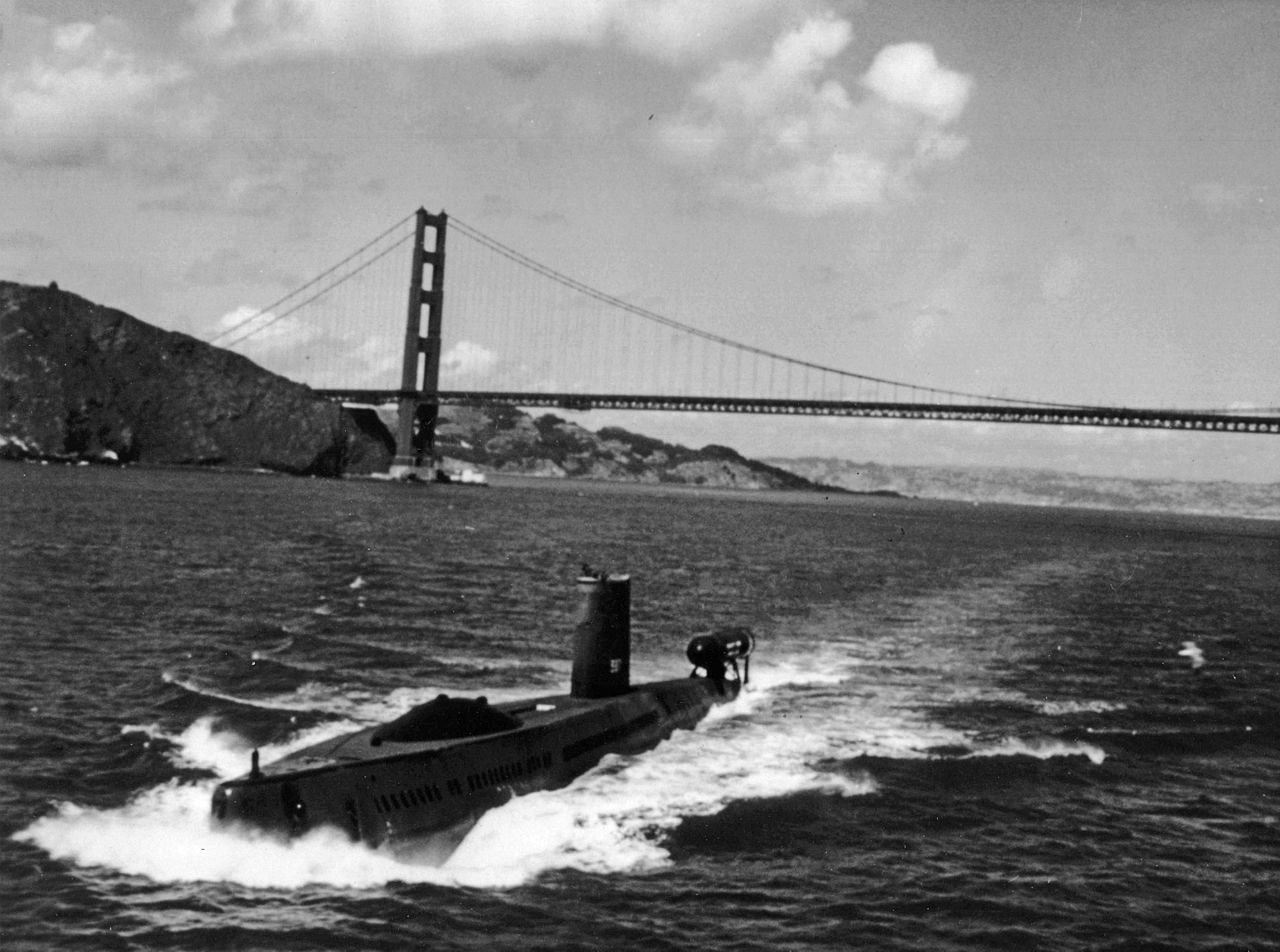
Halibut with a diver lockout on the stern
The first submarine modified for this was the former cruise missile submarine Halibut, whose missile hangar was converted into the "Bat Cave", equipped to control a pair of "fish", towed camera and sonar pods that could be dangled up to 7 miles below the submarine to survey the bottom even in the deep ocean. Halibut's first test came in mid-1968, when she was sent to look for the wreck of Soviet missile submarine K-129, sunk in the mid-Pacific under mysterious circumstances. She was successful in locating the submarine, but the Navy's plan to retrieve the cryptography equipment and nuclear missiles using an ROV was cancelled in favor of a CIA scheme to build a special ship equipped with a giant claw to reach down and scoop the whole submarine off the bottom. Unfortunately, the submarine broke while being lifted and only a small portion was retrieved.
But that was only Halibut's second-greatest triumph. Her finest hour came in 1971, when she was assigned to enter the Sea of Okhotsk, in the Russian Far East, and tap an undersea cable connecting the missile submarine base at Petropavlovsk to Pacific Fleet headquarters at Vladivostok. The Soviets claimed Okhotsk as territorial waters, and the risks of being caught were substantial, particularly as the plan for locating the cable was to come near the beach and look for signs ashore saying "Cable - Do Not Anchor". Astonishingly, this plan worked, and saturation divers were able to plant a recorder 400' down that stayed behind even as Halibut turned for her secondary mission, recovering the fragments of the SS-N-12 anti-ship missile from the test range. Halibut returned home with two million missile fragments, enough to essentially reconstruct the missile and greatly aid the construction of countermeasures, and tapes from the tap that left the NSA ecstatic.
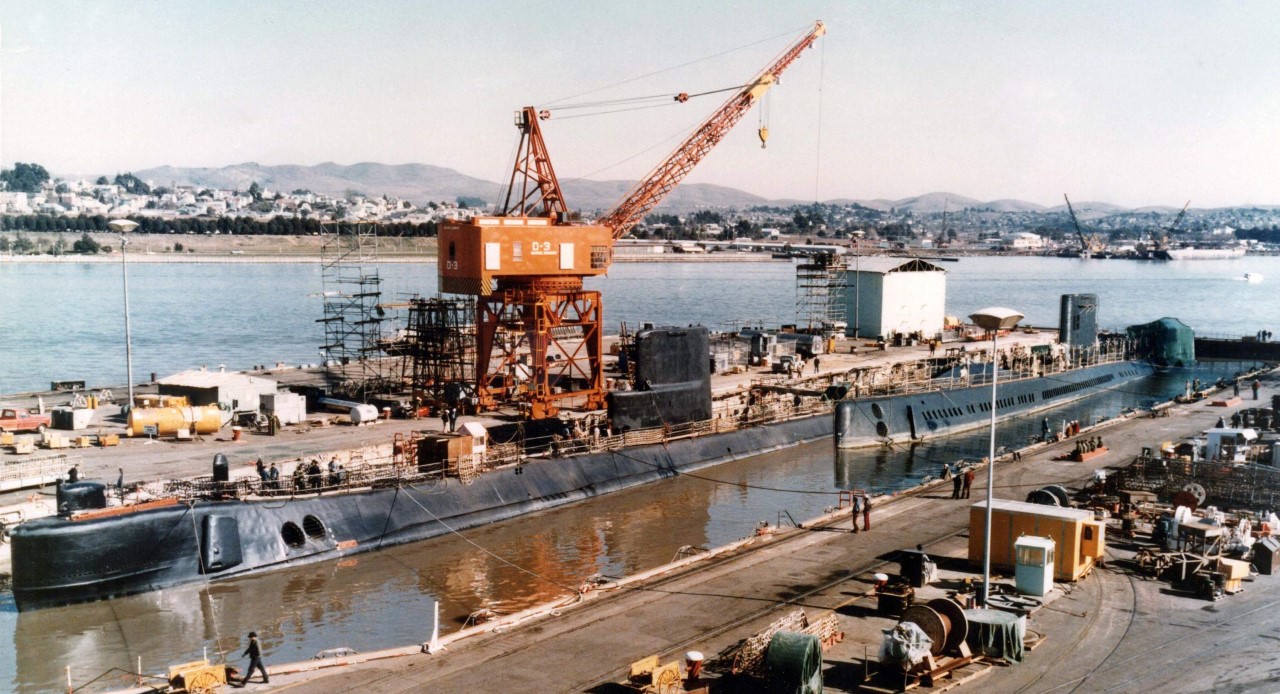
Seawolf (left) and Halibut in drydock at Mare Island
Halibut was old and noisy, and she was retired in 1976, handing her role over to other submarines. The task of pulling fragments off the seabed fell to Seawolf, even older but the possessor of a 52' stretch to accommodate the equipment for undersea work, while much of the cable-tapping work was handed over to Parche and Richard B Russell, modern Sturgeon class boats that could venture into waters even less hospitable to American submarines than Okhotsk. Seawolf was nearly lost on her last mission to the original cable tap when a violent storm trapped her on the bottom and her cooling system began to be clogged with sand. Shortly after her return, the Soviets discovered the tap thanks to a former NSA employee by the name of Ronald Pelton, who was later located by the FBI and sentenced to federal prison.
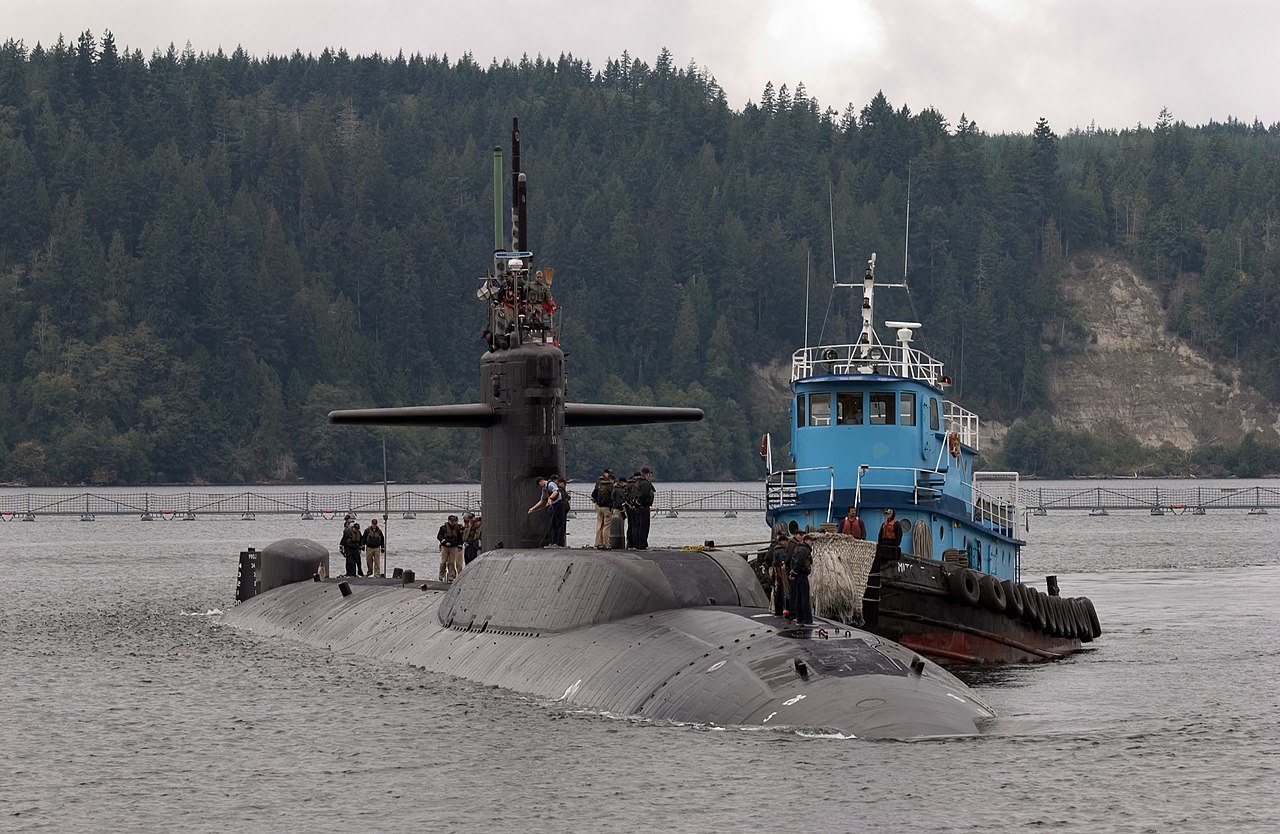
Parche late in her career, with the stretch visible forward of the sail
But the cable-tapping program had moved onto bigger and better things, with Parche going from her base in the Pacific under the North Pole to tap cables in the Barents Sea, which gave insight into the even more critical operations of the Northern Fleet. This operation earned Parche the first of what ultimately became 9 Presidential Unit Citations, each essentially the equivalent of a Navy Cross, which make her the most decorated ship in the history of the US Navy. Tapping operations in the Barents continued even after the Okhotsk tap was discovered, and in the late 80s and early 90s, Parche was given a 100' stretch to allow her the full range of capabilities for diving and object retrieval. Her retirement in 2004 saw the mission handed over to the USS Jimmy Carter, the third unit of the Seawolf class, which carries on the tradition. She got a Presidential Unit Citation in 2012 for an unspecified accomplishment, a reminder that the submarine remains an unparalleled platform for figuring out what the enemy is up to and gathering information on areas where more conventional assets may not be welcome. This has been a major mission of the current Virginia class submarines, which have extensive swimmer support capabilities and a chin sonar for "covert oceanography". Some of the later units have tubes that are suitable for deploying unmanned vehicles, and while there's no word on their ESM capabilities, it's a safe bet that they're quite impressive, and that intelligence-gathering will remain a mainstay of the submarine force for the foreseeable future.

Comments
"Unfortunately, the submarine broke while being lifted and only a small portion was retrieved."
As far as we know. ;)
Mike
Maybe the USN did it the way they wanted: ROV's from a submerged sub to pick through the wreck, which supposedly was still in good shape after being dropped, while everyone watched the Glomar Explorer's whereabouts.
I had a neighbor growing up who was a communications tech on a sub. All he would, and could, tell me was that he saw Petropavlovsk & Vladivostok through the periscope. The way he said it was in a way that it wasn't seeing them at a distance on the horizon kind. Oh and that the FBI still checked in with him every so often. : )
@nomad
I was under the impression that the wreck was probably not in good shape, and might well have been essentially destroyed when it was dropped.
@bean
If you can reconstruct an antiship missile from 2 million fragments, there's probably still quite a bit of useful info in a shipwreck even after it's been crushed.